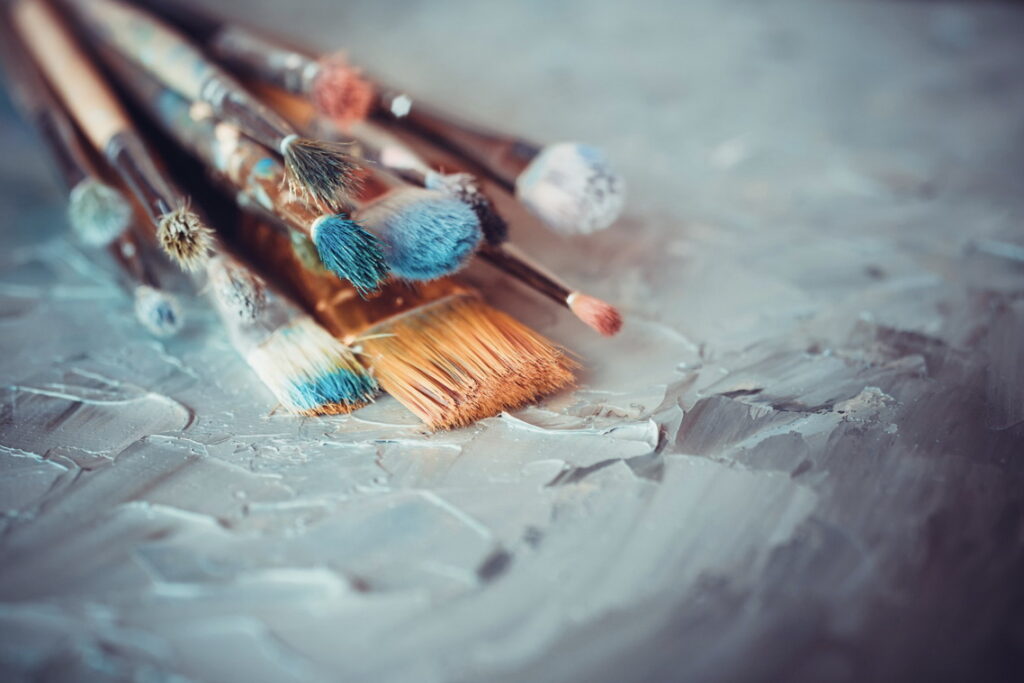
Art can take us on an internal journey through sensation and strong emotion, or it can simply amaze us with its beauty. Our reactions to a piece of art may be varied, but there is no denying its ability to have an impact.
Art may be good medicine for the soul, but it is also beneficial for the body and brain. It has the power to decrease your stress, improve your overall well-being and even change your brain! Not only can creative expression decrease depression and anxiety, according to the Harvard Medical school, “art has been linked to improved memory, reasoning, and resilience in healthy older people.”
Viewing, analyzing and creating a piece of art stimulates the brain in substantial ways. For example, a painting of an apple is not an actual apple. In order to understand the visual input of the image of an apple on canvas, the brain must interpret the patterns created of lines and colors as a familiar image. Each time you view a piece of art, your brain is working to make sense of the information it has received. Fortunately, our brains are remarkably adept at making sense of incomplete information and creating meaning from patterns.
Beyond the brain’s skill of making sense of what the eyes take in, the brain actually goes through changes when we look at a beautiful art piece, with blood flow to the brain increasing as we connect to emotions, memories or the feelings and sensations that are evoked.
Creating art has effects that are distinct from just viewing art. Studies show that making art can increase connectivity in the brain. The hands-on process of creating art in various mediums, like painting, sculpting, sketching, photography or even glassblowing, can be compared to exercise for the brain. Similar in effect to how physical exercise promotes health in the body, the process of creating art keeps the mind sharper, even helping stave off cognitive decline.
“A 2017 report from the Mayo Clinic Study of Aging indicated that people over 70 who did crafts projects had a lower risk of developing mild cognitive impairment than did those who read books. In a 2014 German study, retirees who painted and sculpted had greater improvements in spatial reasoning and emotional resilience than did a similar group who attended art appreciation classes.” – Healing Power of Art (Harvard Women’s Health Watch, July 2017)
The good news is that the benefits of art are not dependent on the skill level or talent of the artist. It is the process of creativity that is the catalyst for the positive effects of art, not the product itself.
Art can help reduce stress and promote relaxation, which helps us cope with life’s challenges. Long-term stress can have a negative effect on brain function, decreasing mental clarity and having a negative effect on our overall health.
You can start enjoying the many benefits art can bring to your life right now by participating in some of these activities:
Photography
Pick up a camera and take some photos of family and friends. Record some of the events in your life. You may discover a new perspective!
Art lessons
Take a painting class or learn to make greeting cards. You get even more brain-boosting benefits if you socialize while you create.
Adult coloring books
A growing trend, adult coloring can be relaxing and fun.
Visit a local museum
Enjoy the art created by masters. When you get back home, write about the experience to receive even more of a cognitive benefit.
So “flex” your brain! Move toward better brain health as you observe, participate and create beauty, making art a part of your everyday life.
Sharlyn Green holds a master’s degree in Management and is a Health Coach through the Institute of Integrative Nutrition. She is an E-RYT 200 and wellness expert and enjoys speaking nationally on fitness and wellness topics. Find more information about Core Connection Wellness at https://www.core-connection.net or contact Sharlyn directly at sharlyn@core-connection.net.